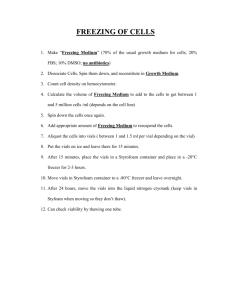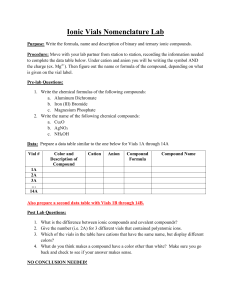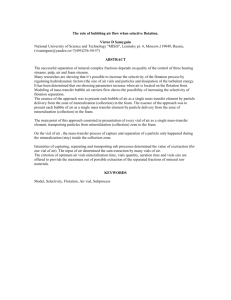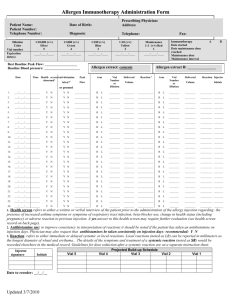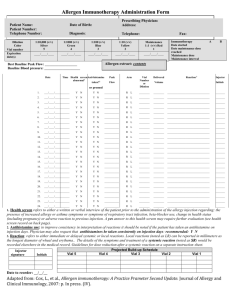Food Nutrient Analysis Lab
advertisement
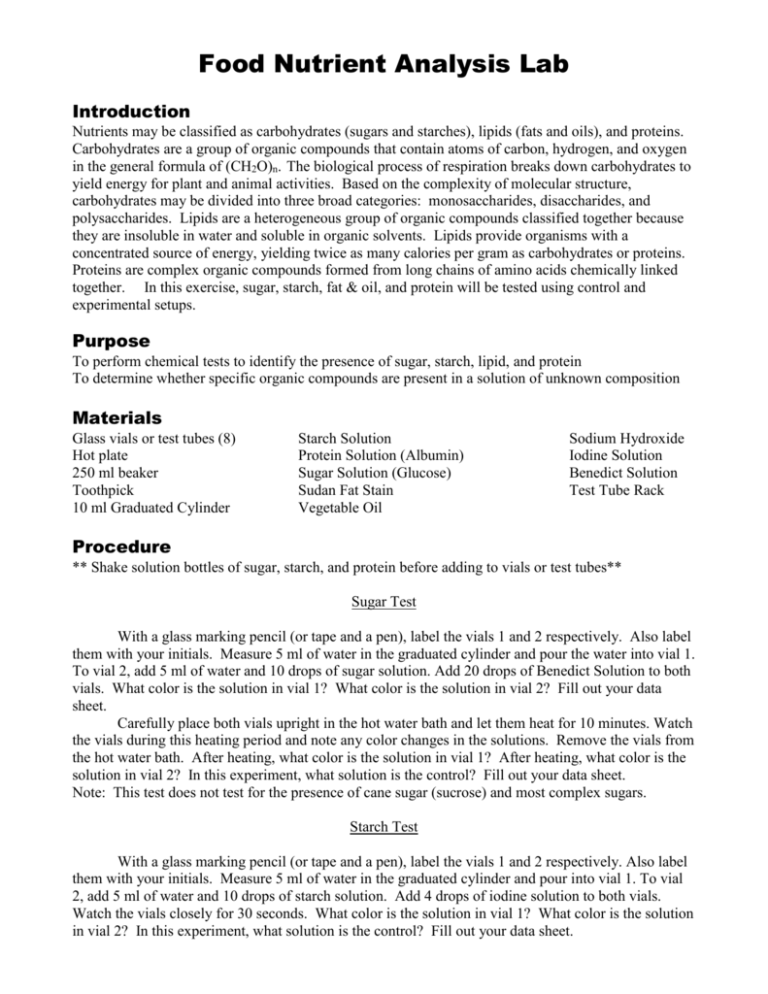
Food Nutrient Analysis Lab Introduction Nutrients may be classified as carbohydrates (sugars and starches), lipids (fats and oils), and proteins. Carbohydrates are a group of organic compounds that contain atoms of carbon, hydrogen, and oxygen in the general formula of (CH2O)n. The biological process of respiration breaks down carbohydrates to yield energy for plant and animal activities. Based on the complexity of molecular structure, carbohydrates may be divided into three broad categories: monosaccharides, disaccharides, and polysaccharides. Lipids are a heterogeneous group of organic compounds classified together because they are insoluble in water and soluble in organic solvents. Lipids provide organisms with a concentrated source of energy, yielding twice as many calories per gram as carbohydrates or proteins. Proteins are complex organic compounds formed from long chains of amino acids chemically linked together. In this exercise, sugar, starch, fat & oil, and protein will be tested using control and experimental setups. Purpose To perform chemical tests to identify the presence of sugar, starch, lipid, and protein To determine whether specific organic compounds are present in a solution of unknown composition Materials Glass vials or test tubes (8) Hot plate 250 ml beaker Toothpick 10 ml Graduated Cylinder Starch Solution Protein Solution (Albumin) Sugar Solution (Glucose) Sudan Fat Stain Vegetable Oil Sodium Hydroxide Iodine Solution Benedict Solution Test Tube Rack Procedure ** Shake solution bottles of sugar, starch, and protein before adding to vials or test tubes** Sugar Test With a glass marking pencil (or tape and a pen), label the vials 1 and 2 respectively. Also label them with your initials. Measure 5 ml of water in the graduated cylinder and pour the water into vial 1. To vial 2, add 5 ml of water and 10 drops of sugar solution. Add 20 drops of Benedict Solution to both vials. What color is the solution in vial 1? What color is the solution in vial 2? Fill out your data sheet. Carefully place both vials upright in the hot water bath and let them heat for 10 minutes. Watch the vials during this heating period and note any color changes in the solutions. Remove the vials from the hot water bath. After heating, what color is the solution in vial 1? After heating, what color is the solution in vial 2? In this experiment, what solution is the control? Fill out your data sheet. Note: This test does not test for the presence of cane sugar (sucrose) and most complex sugars. Starch Test With a glass marking pencil (or tape and a pen), label the vials 1 and 2 respectively. Also label them with your initials. Measure 5 ml of water in the graduated cylinder and pour into vial 1. To vial 2, add 5 ml of water and 10 drops of starch solution. Add 4 drops of iodine solution to both vials. Watch the vials closely for 30 seconds. What color is the solution in vial 1? What color is the solution in vial 2? In this experiment, what solution is the control? Fill out your data sheet. Lipid Test With a glass marking pencil (or tape and a pen), label the vials 1 and 2 respectively. Also label them with your initials. Measure 5 ml of water in the graduated cylinder and pour the water into vial 1. To vial 2, add 5 ml of water and 10 drops of vegetable oil. Use the end of a toothpick to transfer a small amount of Sudan Fat Stain to both vials. Cover the open end of vial 1 with your thumb and shake the vial for about 5 seconds. Shake vial 2 in the same manner. Set the vials aside and do not move them for three minutes. What color is the solution in vial 1 after three minutes? Fill out your data sheet. A mixture of oil and water usually separates into two layers with the oil forming the top layer. Does the Sudan Fat Stain appear to concentrate in the water or in the oil? Fill out your data sheet. In this exercise, which solution is the control? Protein Test With a glass marking pencil (or tape and a pen), label the vials 1 and 2 respectively. Also label them with your initials. Measure 5 ml of water in the graduated cylinder and pour the water into vial 1. To vial 2, add 5 ml of water and 10 drops of protein solution. Add 20 drops of sodium hydroxide to both vials. Then add 20 drops of copper sulfate solution to both vials and gently shake the vials. When solutions of sodium hydroxide and copper sulfate are mixed in the presence of a protein, a pink or purple precipitate forms, which upon settling leaves the liquid above it pink or purple. If the two solutions are mixed in the absence of a protein, a blue precipitate forms, which upon settling leaves the liquid above it clear. What color is the solution in vial 1? What color is the solution in vial 2? In this exercise, which solution is the control? Fill out your data sheet. Optional Exercise Common foods can be analyzed for nutrient content. Liquid foods can be tested according to the directions for each test given above. To perform a sugar, starch, or protein test on solid food, place a small amount in a vial and add 5 ml of water, shake, and perform the specific test described above. To perform a lipid test on solid food, place a small amount in a test tube and perform the same procedure for Vial 2 as described above in the Lipid Test section (but do not add Sudan Fat Stain). Optional Exercise 1 - Unknowns 1) Gather one of the several unknown numbered samples and test this food for the presence of sugar, starch, lipid, and protein using the directions given above for each test. Record your data on Data Table 1 – Optional Exercise 1 with a yes or √ for a positive test and a no or X for a negative test. 2) Repeat the procedure in Step 1 for two more unknown numbered samples. Optional Exercise 2 – Known Foods 1) Take one of the known samples and hypothesize whether or not the known sample will contain the presence of sugar, starch, lipids, and proteins. Record your hypothesis on Data Table 2 – Optional Exercise with a yes or √ for a positive test and a no or X for a negative test. 2) Test this food for the presence of sugar, starch, lipid, and protein using the directions given above for each test. Record your data on Data Table 2 – Optional Exercise 2 with a yes or √ for a positive test and a no or X for a negative test. 3) Repeat steps 1 & 2 for two more known samples.
